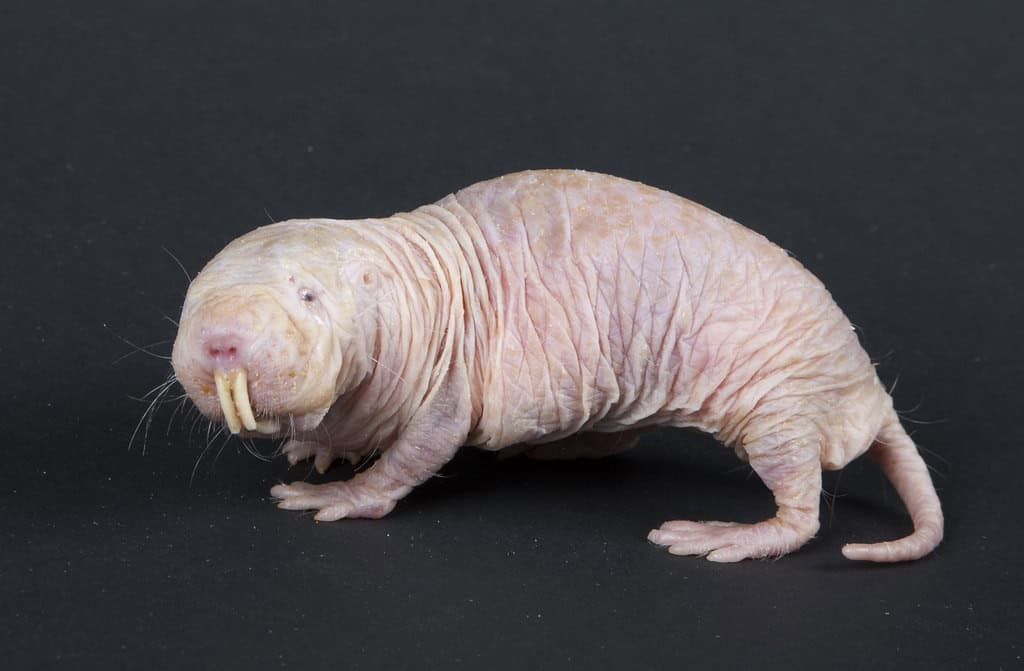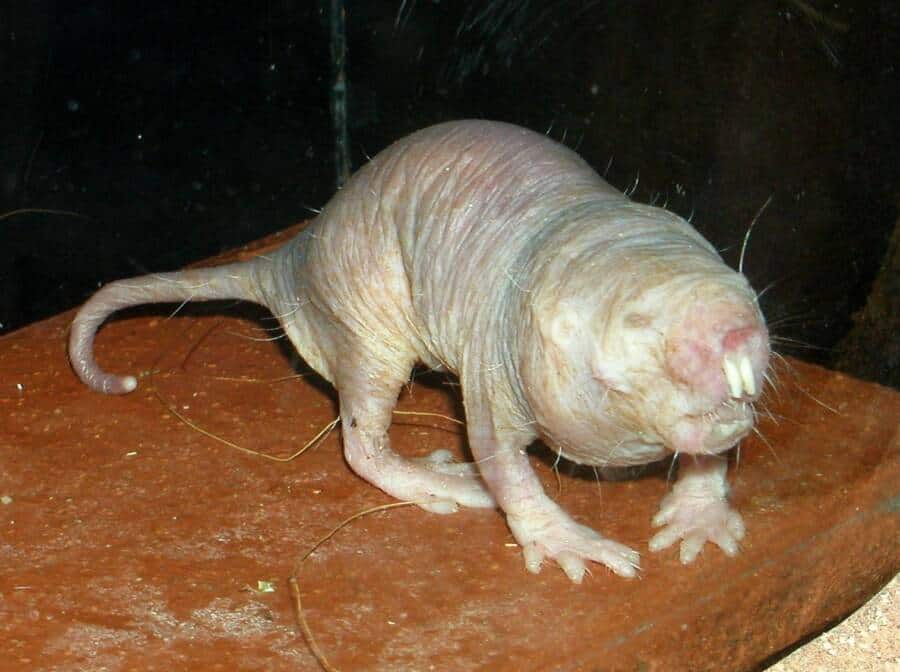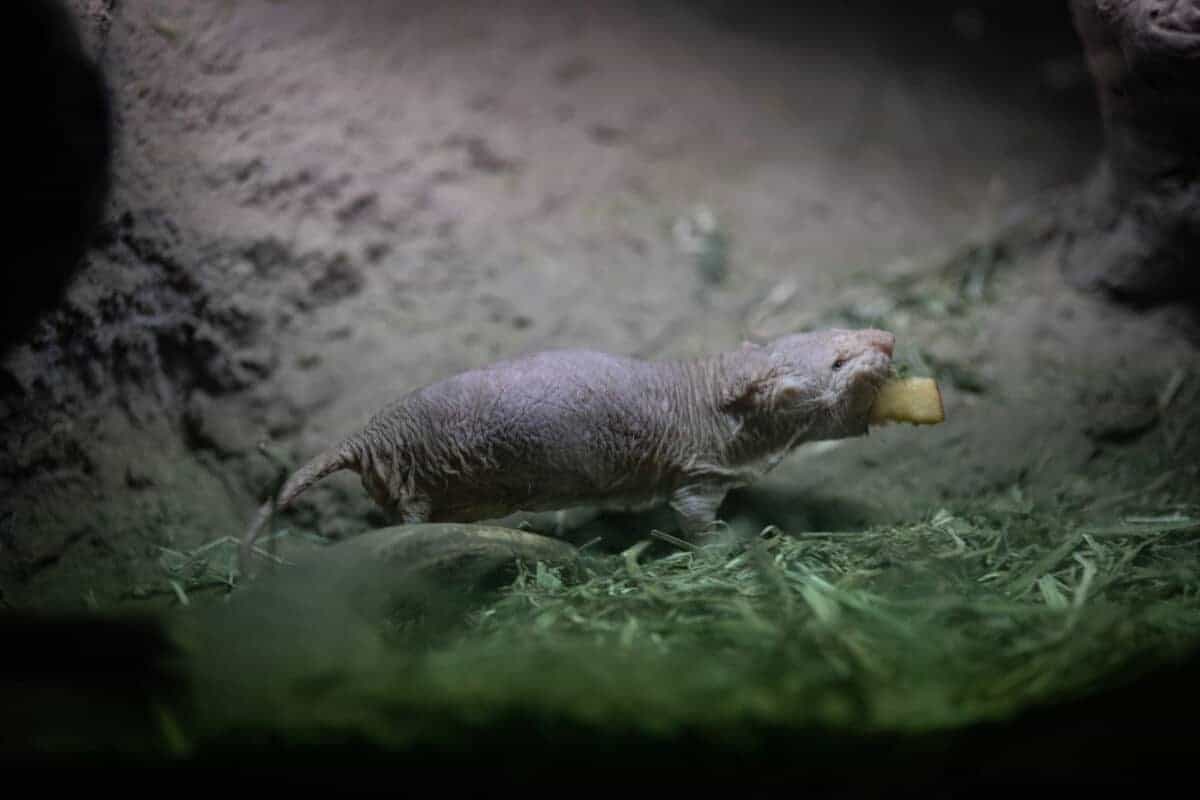In the underground tunnels of East Africa lives one of nature’s most fascinating medical mysteries: the naked mole rat (Heterocephalus glaber). This small, hairless, and seemingly unremarkable rodent possesses an extraordinary superpower that has captivated scientists worldwide—a near-complete immunity to cancer. While humans and most other mammals have cancer rates that increase dramatically with age, naked mole rats can live up to 30+ years virtually cancer-free. Their exceptional resistance to this devastating disease has made them a focal point of cutting-edge medical research, offering tantalizing clues that might one day revolutionize human cancer prevention and treatment.
The Bizarre World of Naked Mole Rats

Before delving into their cancer resistance, it’s worth appreciating just how unusual naked mole rats truly are. These small mammals, weighing only 30-40 grams, live in complex underground colonies primarily in Ethiopia, Somalia, and Kenya. Unlike nearly all other mammals, naked mole rats are eusocial—they live in colonies structured like those of bees or ants, with a single breeding queen and numerous non-breeding workers. Their pink, wrinkled skin lacks fur (except for sensory whiskers), their eyes are tiny to the point of near-blindness, and their large front teeth extend outside their lips for digging tunnels. They can survive in extremely low-oxygen environments, feel no pain from acid or capsaicin (the compound that makes chili peppers spicy), and can live up to 30-37 years—nearly 10 times longer than similarly sized rodents. This collection of odd traits alone would make them scientific curiosities, but their cancer resistance elevates them to potential lifesavers.
The Remarkable Cancer Resistance

The cancer resistance of naked mole rats was first documented conclusively in 2008, though anecdotal observations had existed for years prior. After decades of observation across multiple colonies worldwide, scientists have documented vanishingly few cases of cancer in these animals. This stands in stark contrast to mice and rats, which can have cancer rates exceeding 70-80% in older animals. The resistance isn’t just statistical—laboratory attempts to induce cancer in naked mole rat cells typically fail, even when using powerful carcinogens or oncogene activation that readily transforms cells from other species. When cancer is artificially induced through extreme measures, naked mole rat cells demonstrate remarkable abilities to arrest the growth and prevent malignant progression. This exceptional resistance makes them unique among mammals and offers an intriguing natural model for cancer prevention.
High-Molecular-Weight Hyaluronan: The Cancer Shield

One of the most significant discoveries in naked mole rat cancer research came in 2013 when scientists identified a substance called high-molecular-weight hyaluronan (HMW-HA) as a key factor in their cancer resistance. Hyaluronan is a type of sugar molecule found in the extracellular matrix of many animals, including humans. However, the naked mole rat produces an unusually long version of this molecule—about five times larger than that found in humans or mice—and in much greater quantities. This HMW-HA acts as a powerful tumor suppressor by triggering an “early contact inhibition” response. When cells become too crowded, this mechanism stops them from dividing further, preventing the uncontrolled cell division characteristic of cancer. When researchers removed HMW-HA from naked mole rat cells in laboratory experiments, the cells became susceptible to malignant transformation, confirming its protective role. The discovery opened new avenues for potential cancer treatments in humans targeting similar pathways.
Enhanced DNA Repair Mechanisms

Beyond the remarkable HMW-HA system, naked mole rats possess exceptionally efficient DNA repair mechanisms. Cancer typically begins when DNA damage accumulates in cells, leading to mutations that enable uncontrolled growth. Naked mole rat cells have demonstrated superior abilities to identify and repair DNA damage before it can lead to potentially cancerous mutations. Their cells express higher levels of many DNA repair proteins compared to mice or humans, and these repair systems remain robust even in advanced age. This efficiency may result from evolutionary adaptations to their underground lifestyle, where they’re exposed to low oxygen levels that would typically cause DNA damage in other species. By maintaining genomic integrity throughout their long lives, naked mole rats prevent one of the fundamental initiating events in cancer development, adding another layer to their multi-faceted cancer resistance.
Rigorous Cell Cycle Control

Another critical component of naked mole rat cancer resistance lies in their unusually stringent cell cycle control mechanisms. The cell cycle is the process through which cells grow and divide, and its dysregulation is a hallmark of cancer. Naked mole rat cells have evolved multiple checkpoints and regulatory proteins that enforce strict controls over cell division. Their cells express elevated levels of several tumor suppressor proteins, including p16 and p27, which act as powerful brakes on the cell cycle. Additionally, naked mole rat cells are extremely sensitive to contact inhibition—the process by which normal cells stop dividing when they come into contact with neighboring cells. This heightened sensitivity creates an additional barrier against the uncontrolled proliferation that characterizes tumor growth. When these cell cycle control mechanisms are experimentally disabled, naked mole rat cells become more susceptible to cancerous transformation, highlighting their importance in cancer prevention.
The Role of PARP1: A Unique Cancer-Fighting Protein

A 2021 breakthrough in naked mole rat research identified yet another cancer-fighting mechanism: a modified version of a protein called PARP1 (Poly ADP-ribose polymerase 1). While PARP1 exists in many mammals including humans, the naked mole rat version contains unique mutations that enhance its effectiveness. This protein helps repair DNA damage and prevents cells with damaged DNA from replicating. In naked mole rats, PARP1 shows significantly higher activity levels compared to other rodents, and it maintains this heightened activity throughout the animal’s lifetime. The protein appears particularly effective at preventing the replication of cells with telomere damage—a type of DNA damage associated with aging and cancer development. Researchers have found that when they experimentally reduced PARP1 activity in naked mole rat cells, the cells became more vulnerable to malignant transformation, confirming this protein’s critical role in their cancer resistance.
Tumor Microenvironment: Hostile Territory for Cancer

Beyond cellular mechanisms, naked mole rats create a physiological environment throughout their bodies that’s inherently hostile to tumor development. Their body temperature runs lower than that of most mammals (about 32°C compared to 37°C in humans), which may slow cellular metabolism and reduce the accumulation of DNA damage. Their tissues also maintain a slightly acidic pH and function in lower oxygen conditions than most mammals—conditions that would stress normal cells but which naked mole rats have adapted to thrive in. Interestingly, these same conditions (acidic, low-oxygen environments) are often found in human tumors, which develop adaptations to survive these harsh conditions. Naked mole rats appear to have evolved to function optimally in precisely the environments that challenge cancer cells, potentially giving their healthy cells a competitive advantage over any incipient tumor cells. This hostile microenvironment creates yet another barrier in their multi-layered defense against cancer.
The Rare Cases: When Mole Rats Do Develop Cancer

Despite their remarkable resistance, naked mole rats are not completely immune to cancer. In 2016, researchers documented two cases of cancer in naked mole rats—one in a 22-year-old animal and another in a 20-year-old. These cases, occurring in animals that had lived about 70-80% of their maximum lifespan, are extraordinarily rare considering the thousands of naked mole rats that have been studied over decades. For comparison, a similar cancer rate in humans would equate to only a handful of cancer cases worldwide. Interestingly, the types of cancers observed (a gastric neuroendocrine carcinoma and a renal adenocarcinoma) differed from the common cancer types seen in other rodents, suggesting different cancer vulnerability pathways. These rare cases actually provide valuable information, as they help scientists understand which cancer types can occasionally overcome naked mole rat defenses and through which mechanisms. Rather than disproving their cancer resistance, these exceptions highlight just how exceptional their cancer protection truly is.
Evolutionary Origins: Why Did They Develop Cancer Resistance?

The evolutionary origins of naked mole rat cancer resistance present a fascinating question. Why would these small underground rodents evolve such extraordinary anti-cancer mechanisms? The answer likely lies in their exceptionally long lifespan. Most small mammals live fast-paced, short lives—a mouse typically lives only 2-3 years. By contrast, naked mole rats can live over 30 years, making them the longest-lived rodents on Earth. This longevity may have created evolutionary pressure to develop enhanced cancer protection, as longer-lived animals face greater lifetime cancer risk. Additionally, their eusocial colony structure means that only the queen and a few males reproduce, while most colony members are non-breeding workers. This creates strong selection pressure for the queen to remain healthy and cancer-free for decades to ensure colony survival. Some scientists also theorize that their underground lifestyle, with constant exposure to low oxygen and high carbon dioxide levels, may have driven adaptations that coincidentally provide cancer protection. Understanding these evolutionary pressures provides context for how such remarkable cancer resistance developed.
From Mole Rats to Medicine: Translational Research

The extraordinary cancer resistance of naked mole rats isn’t just a biological curiosity—it holds tremendous potential for human medicine. Researchers worldwide are working to translate naked mole rat cancer-fighting mechanisms into potential therapies for humans. One promising avenue involves synthetic versions of high-molecular-weight hyaluronan, which might be used topically or systemically to enhance cancer prevention. Pharmaceutical companies are investigating drugs that might mimic or enhance the activity of naked mole rat versions of proteins like PARP1. Other researchers are exploring whether gene therapy could introduce naked mole rat versions of tumor suppressor genes into human cells to enhance cancer resistance. Beyond direct cancer applications, understanding how naked mole rats maintain genomic stability throughout their long lives might lead to broader anti-aging therapies. While the journey from basic biological discovery to clinical application is long and complex, naked mole rat research has already yielded insights that are guiding the development of novel cancer prevention and treatment strategies with the potential to save countless human lives.
Research Challenges and Ethical Considerations

Studying naked mole rats presents unique challenges for researchers. Unlike lab mice, which have been bred for research for generations, naked mole rats aren’t standard laboratory animals. They require specialized housing that mimics their underground tunnels, precise temperature and humidity control, and can be difficult to breed in captivity. Their eusocial colony structure means they can’t simply be housed individually like most research rodents. Additionally, their long lifespan means that longitudinal studies take decades rather than months. These practical challenges are accompanied by ethical considerations. As scientific interest in naked mole rats has grown, so has concern about ensuring their humane treatment in laboratory settings. Researchers must balance the potential medical benefits of naked mole rat studies with appropriate ethical standards for their care. Many laboratories have developed specialized ethical guidelines specifically for naked mole rat research, recognizing both their unique biology and the potential benefits their study offers for human health.
Beyond Cancer: Other Medical Insights from Naked Mole Rats

While cancer resistance is perhaps their most celebrated trait, naked mole rats offer insights into numerous other medical conditions. Their exceptional longevity makes them valuable models for aging research, as they show few signs of senescence even in advanced age. They display remarkable resistance to oxygen deprivation (hypoxia), able to survive 18 minutes without oxygen by switching to an unusual anaerobic metabolism pathway—research that could benefit stroke and heart attack treatments where oxygen deprivation causes tissue damage. Intriguingly, naked mole rats also show high resistance to chronic pain, lacking certain neurotransmitters involved in pain sensation, which could inform novel pain management therapies. Their ability to maintain protein quality even in old age suggests mechanisms that might help prevent neurodegenerative diseases like Alzheimer’s and Parkinson’s. Even their unusual cold-bloodedness (for a mammal) and low metabolic rate are being studied for insights into metabolic disorders. This remarkable rodent thus represents a treasure trove of medical possibilities extending far beyond cancer research.
The Future of Naked Mole Rat Research

As technology advances, so does the potential of naked mole rat research. The complete sequencing of the naked mole rat genome in 2011 opened new doors for comparative genomics, allowing scientists to identify unique genetic adaptations linked to cancer resistance and longevity. CRISPR gene editing technology now enables researchers to introduce specific naked mole rat genes or genetic modifications into mouse models to test their cancer-protective effects. Advanced imaging techniques permit real-time visualization of how naked mole rat cells respond to potential carcinogens. Looking forward, the integration of artificial intelligence and machine learning with biological data from naked mole rats may help identify patterns and mechanisms that human researchers might miss. International collaboration has also accelerated, with dedicated naked mole rat research centers established in several countries. The future will likely see new cancer-preventive compounds inspired by naked mole rat biology entering clinical trials, potentially revolutionizing our approach to cancer prevention. As research tools continue to evolve, the medical secrets of this extraordinary animal may yield even more surprising and valuable insights.
The naked mole rat’s remarkable cancer resistance represents one of nature’s most valuable medical gifts—an evolved system of cancer prevention far more effective than anything modern medicine has yet devised. From their unusual hyaluronan to their enhanced DNA repair mechanisms and beyond, these bizarre-looking rodents offer multiple pathways that might one day transform cancer prevention and treatment in humans. As research continues to unlock their secrets, these subterranean superheroes may prove instrumental in developing new approaches to one of humanity’s most persistent health challenges. The journey from underground tunnels in East Africa to breakthrough cancer therapies worldwide exemplifies how biodiversity preservation and basic biological research can yield unexpected treasures with profound implications for human health.
- Why Bears Rub Their Backs Against Trees - June 20, 2025
- How Zebras Form Alliances with Other Species - June 20, 2025
- How Light Pollution Affects Nocturnal Animals Across the U.S. - June 20, 2025
